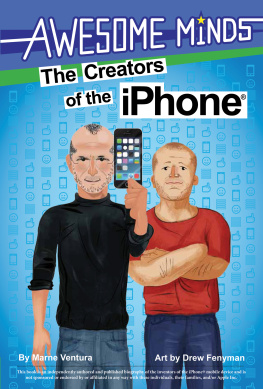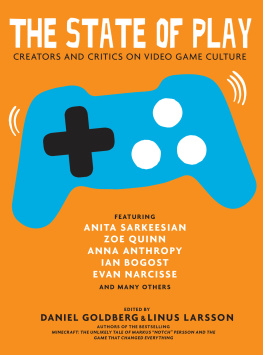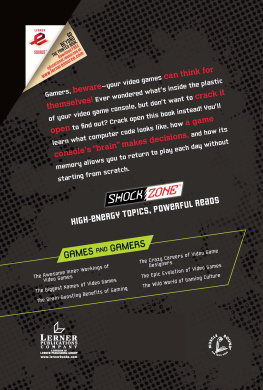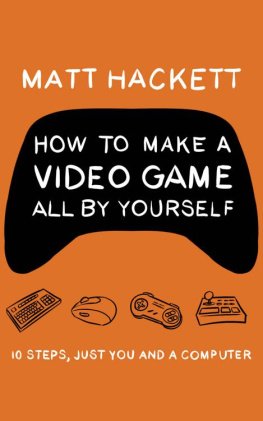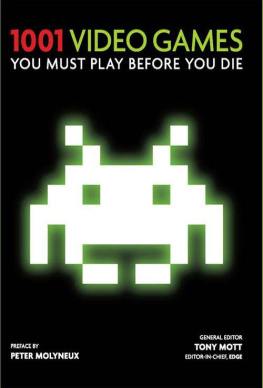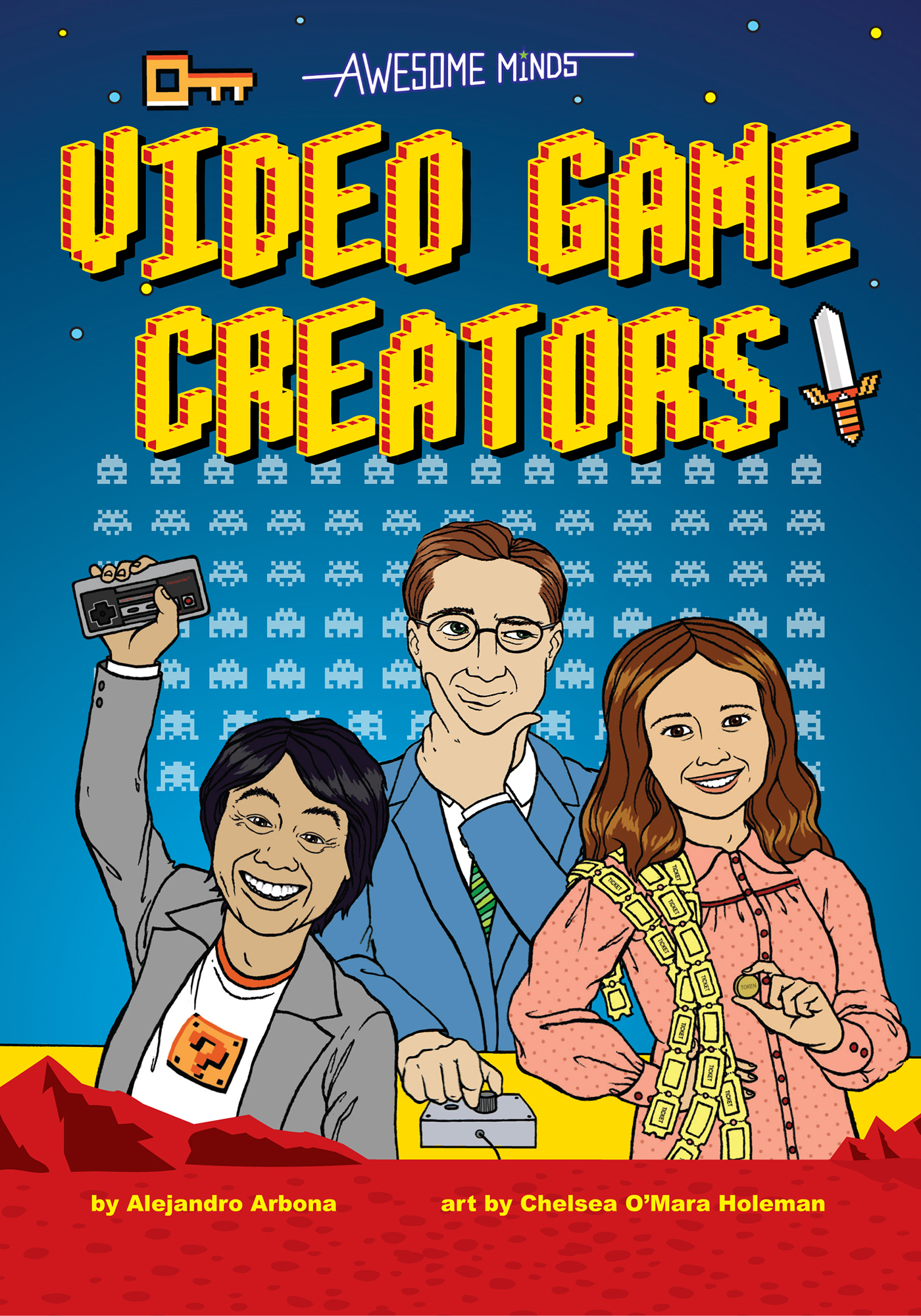


video game creators
by
Alejandro Arbona
art by
Chelsea OMara Holeman

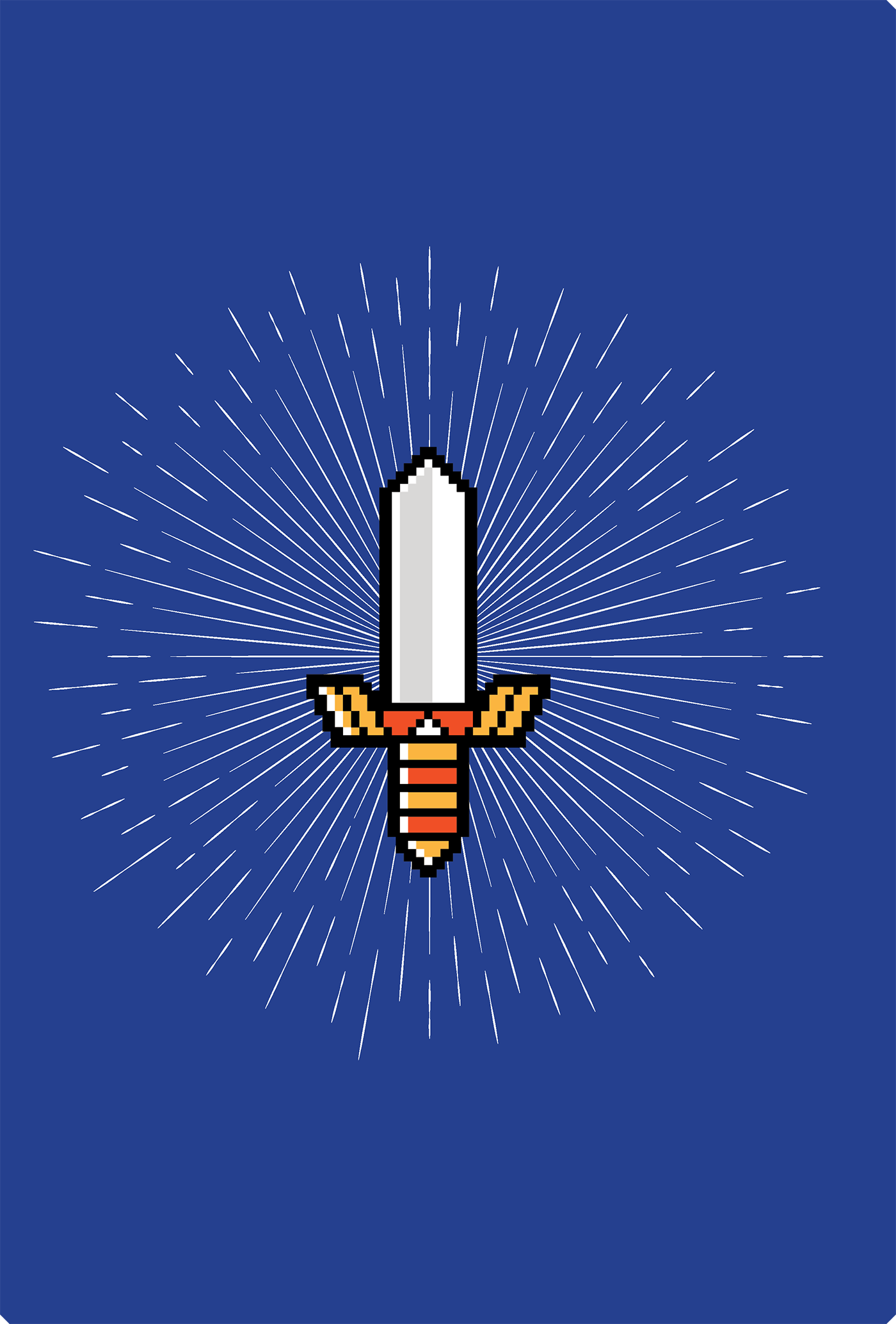
We asked the author:
Who is your video game hero?
In my personal opinion, Shigeru Miyamoto is the greatest creative mind ever to work in video games, the most imaginative designer ever to create a game, the canniest storyteller, and the most reliable hit-maker video games ever had. In this book youll read about just a few of the legendary games he created, single-handedly. He is a personal hero of mine.
Alejandro Arbona
Now, we ask you:
Who is your video game hero?
Contents
Introduction
Lets Get This Started
The video games we play today come in many unique forms: as consoles for our TV, streaming online through our home computers, downloaded to portable devices like our phones and tablets, and even the fully immersive environment inside a virtual reality headset. But however we enter those worlds, video games all have one thing in commonthe computer. People used computers to create all these games, and the devices we play them on are all computers of one kind or another.
The creation of video games stretches back almost as far as the invention of the modern computer. If you dig deep enough into their history, some of the very first video games were played in the late 1940s and early 1950s. Engineers and programmers, mostly working in labs at universities and military contractors (private companies working for the United States government), designed rudimentary digital games to demonstrate how their new inventions were inter-activeyou would press a key and a blip moved on the screen.
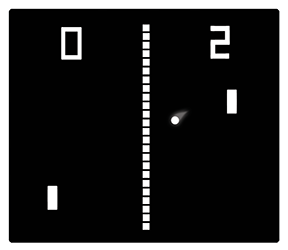
Pong is one of the earliest arcade video games.
The evolution of computers actually began long before that. It happened very slowly over a hundred years, starting in the year 1837. A man named Charles Babbage designed what he called the Analytical Engine, a machine that could do calculations automatically. In 1843, a woman named Ada Lovelace wrote an algorithm, a series of actions for the Analytical Engine to execute, making her the worlds first computer programmer. Babbage never finished a practical build of the Analytical Engine, and so Lovelaces algorithm was never tested; nevertheless, what they created together were the ideas that became the modern computer more than a century later.

Mathematician Ada Lovelace
The advances that were made in modern computingand video gamescame at blinding speed. From the middle of the 20th century until today, computers and video games developed so fast that no one could ever predict how the new technology would look in 10 years. Computers in the 1950s were so big, they filled entire rooms, and computer technicians would interact with walls of noisy processors grinding through their calculations. By the 1960s, technicians at labs like Xerox in Palo Alto, California, had made devices compact enough to be called personal computers, though they were still the size of a washing machine and you had to be a trained expert to operate one. Ten years after that, by the 70s, computers became small enough that a person could put one on their desk at work and write a letter.

By the middle of the 1980s, more and more people had computers in their homes, with early black-and-white video games and interchangeable floppy disks (the icon we still use today to represent save) to store information. Not only that, there were dedicated video game consoles like the ones made by Atari and Nintendo; computers had become so common that special machines were manufactured and sold just for play. Modems and the World Wide Web began to enter our lives. By the 90s, the home computer was a staple for every middle-class family, now equipped with email, web browsers, and games on CD-ROM featuring slick, colorful, highly rendered graphics. Video game consoles, too, brought us the high-powered, candy-colored games of Super Nintendo and Sega Genesis. And during the first decades of the 21st century, weve witnessed a technology boom in our own living roomsgraphics and sound as detailed and evocative as a movie, massive multiplayer virtual worlds, online streaming, and real-time interaction with other gamers.
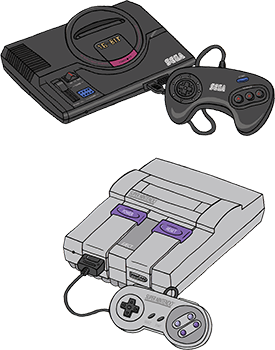
The small computers we carry around nowadaysour phones and tabletshave more processing power in their tiny chips than those rooms full of computers at university labs did in the 1950s. Today we use computers to talk to friends all over the world, work, learn, shop, watch TV and moviesand of course, play video games. Lets take a look at how we got here.


Asteroids, an Atari arcade game designed by Ed Logg, Lyle Rains, and Dominic Walsh, released in 1979
Everything Started...
As A Game
From table tennis to a war in space, and back againas the first computers are powered up, video games are born, and the world will never be the same.

Before creating the worlds first video game, William Higinbotham helped the American government build the atomic bomb that was used in World War II. As a physicist, Higinbotham had been recruited to lead the electronics department for the Manhattan Project, the top-secret scientific operation to split the atom and turn it into a weapon. He spent the rest of his career after the war at the Brookhaven National Laboratory in Long Island, New York, creating sophisticated instrumentation for the U.S. Department of Energy.
Brookhaven Lab held a public exhibition every year to demonstrate its latest developments. As the research facility prepared for its 1958 show, Higinbotham saw that Brookhavens brand-new model of computer could use its processing power to calculate wind resistance and simulate the trajectory of an object moving through the air. This could be useful for all kinds of practical purposes, like aircraft design and missile defense, but Higinbotham had a more fun idea for how to show off what the computer could do.

Next page

